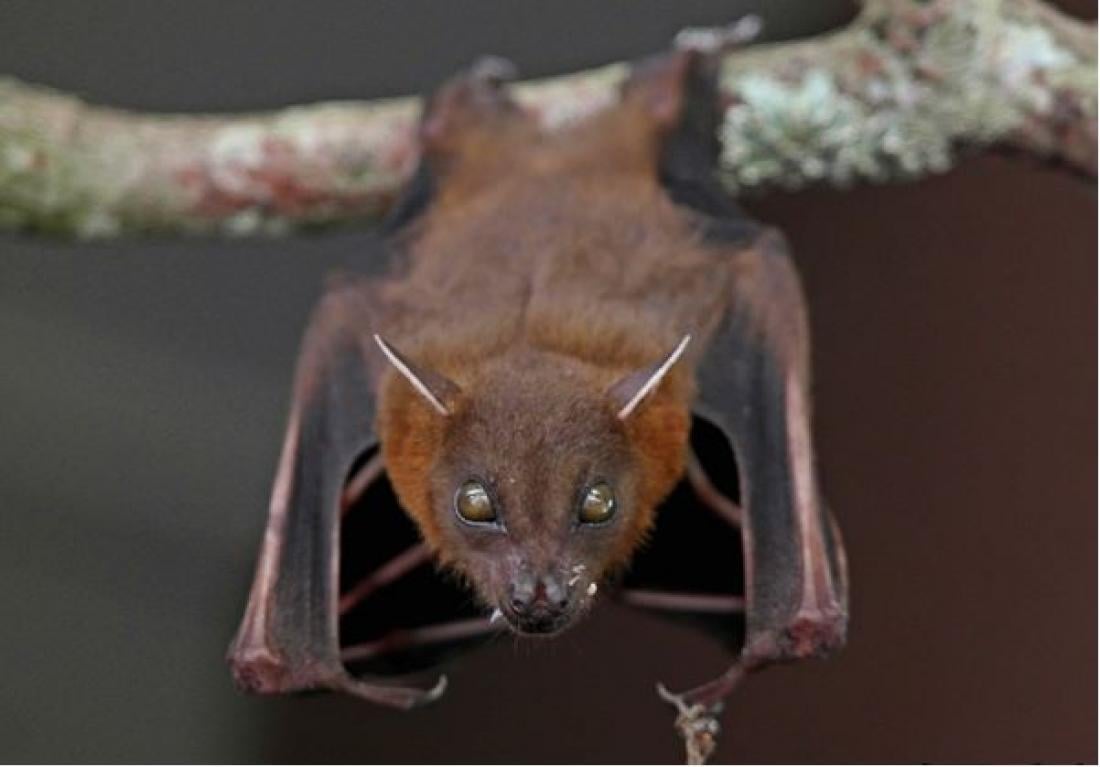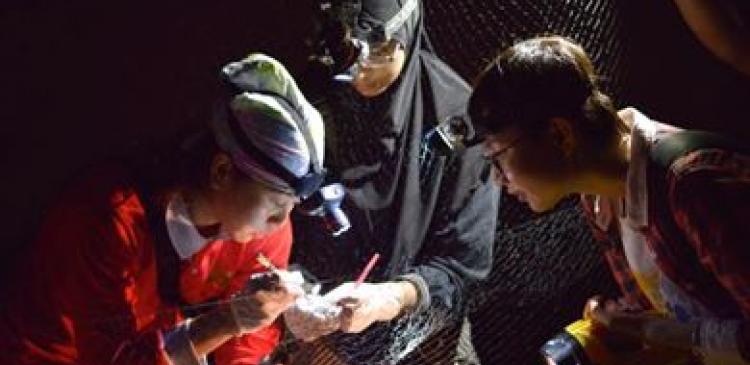The Lesser Dog-faced Fruit Bat, Cynopterus brachyotis which is the most common bat in Peninsular Malaysia and feeds mainly on fruits.
The Lesser Short-nosed Bat, Cynopterus brachyotis, is the most common bat in Peninsular Malaysia and can be found in natural and logged forests, plantations, farms, villages, cities, and towns. Lesser Short-nosed Bats feed mainly on fruit, but which fruit they prefer remains largely unknown due to difficulties in identifying the digested plant remains of fruit in bats’ faeces. Unfortunately, it is often believed that Lesser Short-nosed Bats feed on farm-grown fruits, and thus are killed as crop pests.
To debunk the misconception of Lesser Short-nosed Bats being crop pests, a research team from University of Malaya, Queen Mary University of London and China Agricultural University used DNA barcoding to identify the digested fruit pulp and seeds in faeces of Lesser Short-nosed bats in Peninsular Malaysia.
The team discovered that Lesser Short-nosed Bats feed mostly on figs particularly Ficus fistulosa. They found a large number of fig seeds in bats’ faeces suggested that Lesser Short-nosed Bats play an important role in carrying and dispersing fig seeds between different places. Fig trees are native and pioneer species in Malaysia, and are able to quickly establish themselves in barren land. Therefore, the Lesser Short-nosed Bats are dispersing native pioneer plants which aids in forest regeneration. As figs are not commercially-grown, the feeding habit of Lesser Short-nosed Bats on fig fruits does not cause significant damage to commercial crops and financial loss to farmers.
The low detection of several exotic plants grown by humans in the Lesser Short-nosed Bats’ faeces also suggested that the bats can adapt to changing environments and exploit exotic plants as their novel food sources. The diverse diet of Lesser Short-nosed Bats at oil palm plantation revealed that the bats are not predominantly feeding on oil palm fruits but other plants which are grown near the plantation. Yet this finding suggested that the Lesser Short-nosed Bats also disperse exotic plants which potentially facilitates species invasions.
Overall, the study demonstrated the usefulness of DNA barcoding in feeding habits of fruit bats and the potential of Lesser Short-nosed Bats in adapting to human activities.
For more information, please contact:
(1) Voon-Ching Lim
Institute of Biological Sciences,
Faculty of Science, University of Malaya,
50603 Kuala Lumpur, Malaysia.
Email: [email protected]
(2) Associate Prof. Dr. Rosli bin Ramli
Faculty of Science, University of Malaya,
50603 Kuala Lumpur, Malaysia.
Email: [email protected]
(3) Dr. John-James Wilson
International College Beijing,
China Agricultural University,
Beijing, China.
Email: [email protected]




